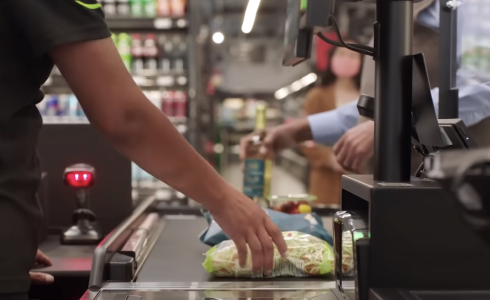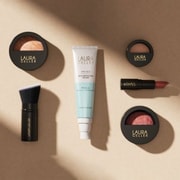Inside Amazon’s new grocery shift—and what it could mean for the way you shop
By
Veronica E.
- Replies 0
For many of us, Amazon has become a go-to for everything from books to batteries—but its role in groceries is growing quickly.
In recent months, shoppers may have noticed more store-brand food items appearing under a new banner: Amazon Grocery.
This shift combines Amazon’s earlier private-label names, like Happy Belly and Amazon Fresh, into one recognizable brand.
It’s a move designed to simplify shopping while offering more affordable options.
And with grocery prices still climbing, the timing of this change may matter more than ever for budget-conscious households.

Amazon’s new grocery strategy
Amazon has consolidated its private-label groceries under one name: Amazon Grocery.
The aim is to make shopping simpler while boosting sales of lower-cost, store-brand foods.
Sales figures suggest the strategy is already working—Amazon reports a 15% increase in sales of its branded food products.
Most items are priced under $5, ranging from snacks to pantry staples.
Jason Buechel, Amazon’s vice president of Worldwide Grocery Stores, explained the goal: “We’re simplifying how customers discover and shop our extensive private label food selection, while maintaining the quality and value our customers expect and deserve.”
Also read: Amazon Prime members are getting free same-day groceries—here’s how to snag yours too
Why private labels are on the rise
Private-label groceries once carried a reputation for being bland or lower in quality.
Today, that image has shifted.
Many store-brand products now match or even exceed the quality of national brands, and in some cases, they’re made by the same manufacturers.
Amazon is not alone in this push.
ALDI has highlighted its own private-label lines with updated packaging, while Walmart has promised to remove synthetic dyes from its store-brand foods.
According to Bank of America, shoppers save about $2 per item on private-label groceries compared to name brands—a meaningful difference for families on tight budgets or fixed incomes.
Also read: Four recalled products sold on Amazon raise safety concerns—check if you have any of these at home
What it means for shoppers
Here’s how Amazon’s private-label expansion could affect everyday shopping:
Also read: Could online grocery shopping be the secret to healthier eating and saving money? Here's what new research says
How to get the most from store brands
If you haven’t tried private-label groceries in a while, a few strategies can help:
Also read: A new grocery delivery option could help stretch your budget
The bigger grocery picture
Amazon’s decision reflects a larger trend in food retail: more competition over price, quality, and convenience.
As online shopping grows, so does the pressure on retailers to offer value while adapting to health-conscious and cost-conscious customers.
For shoppers, it means more choices—and more chances to save.
Read next:

Do you buy store brands when you shop for groceries? Have you tried Amazon’s private-label foods, or do you prefer ones from ALDI, Walmart, or another store? Which products have surprised you with their quality—or disappointed you?
Share your thoughts in the comments, and let’s swap tips on where to find the best deals and flavors!
In recent months, shoppers may have noticed more store-brand food items appearing under a new banner: Amazon Grocery.
This shift combines Amazon’s earlier private-label names, like Happy Belly and Amazon Fresh, into one recognizable brand.
It’s a move designed to simplify shopping while offering more affordable options.
And with grocery prices still climbing, the timing of this change may matter more than ever for budget-conscious households.

Amazon is reshaping its grocery offerings with a growing focus on private-label foods. Image Source: YouTube / Amazon Fresh.
Amazon’s new grocery strategy
Amazon has consolidated its private-label groceries under one name: Amazon Grocery.
The aim is to make shopping simpler while boosting sales of lower-cost, store-brand foods.
Sales figures suggest the strategy is already working—Amazon reports a 15% increase in sales of its branded food products.
Most items are priced under $5, ranging from snacks to pantry staples.
Jason Buechel, Amazon’s vice president of Worldwide Grocery Stores, explained the goal: “We’re simplifying how customers discover and shop our extensive private label food selection, while maintaining the quality and value our customers expect and deserve.”
Also read: Amazon Prime members are getting free same-day groceries—here’s how to snag yours too
Why private labels are on the rise
Private-label groceries once carried a reputation for being bland or lower in quality.
Today, that image has shifted.
Many store-brand products now match or even exceed the quality of national brands, and in some cases, they’re made by the same manufacturers.
Amazon is not alone in this push.
ALDI has highlighted its own private-label lines with updated packaging, while Walmart has promised to remove synthetic dyes from its store-brand foods.
According to Bank of America, shoppers save about $2 per item on private-label groceries compared to name brands—a meaningful difference for families on tight budgets or fixed incomes.
Also read: Four recalled products sold on Amazon raise safety concerns—check if you have any of these at home
What it means for shoppers
Here’s how Amazon’s private-label expansion could affect everyday shopping:
- Lower costs and more choices: More affordable products under $5, available online and in Amazon Fresh stores.
- Comparable quality: Store brands are no longer “second best”—they often share ingredients or production lines with national brands.
- Simpler shopping: The new Amazon Grocery label makes items easier to recognize and trust.
- Healthier trends: With companies like Walmart making changes to additives, shoppers can expect more health-conscious private-label options.
Also read: Could online grocery shopping be the secret to healthier eating and saving money? Here's what new research says
How to get the most from store brands
If you haven’t tried private-label groceries in a while, a few strategies can help:
- Compare ingredients between store and name brands.
- Start with basics like rice, canned goods, or pasta to test the difference.
- Check reviews on Amazon to see what other shoppers say.
- Watch for promotions—store brands are often part of sales or coupon programs.
Also read: A new grocery delivery option could help stretch your budget
The bigger grocery picture
Amazon’s decision reflects a larger trend in food retail: more competition over price, quality, and convenience.
As online shopping grows, so does the pressure on retailers to offer value while adapting to health-conscious and cost-conscious customers.
For shoppers, it means more choices—and more chances to save.
Read next:
- Which grocery store has the best prices on eggs, milk, and butter?
- Celebrate your special day with free treats at these 5 grocery stores
- Are you buying this popular Walmart grocery item? Shoppers shocked by bizarre new packaging!
Key Takeaways
- Amazon has launched Amazon Grocery, unifying its private-label food products like Happy Belly and Amazon Fresh.
- Sales of Amazon-branded food items rose 15%, with most priced under $5 to appeal to budget-conscious shoppers.
- Other major chains such as ALDI, Walmart, and Albertsons are also expanding their private-label lines as shoppers seek more affordable groceries.
- Private-label groceries today often match national brands in quality, and some are produced by the same manufacturers.
Do you buy store brands when you shop for groceries? Have you tried Amazon’s private-label foods, or do you prefer ones from ALDI, Walmart, or another store? Which products have surprised you with their quality—or disappointed you?
Share your thoughts in the comments, and let’s swap tips on where to find the best deals and flavors!
Last edited:






